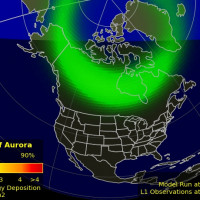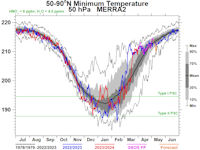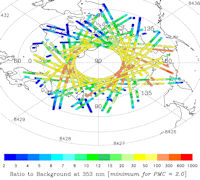 speed: 469.6 km/sec density: 6.49 protons/cm3 more data: ACE, DSCOVR Updated: Today at 0856 UT 6-hr max: C2 1845 UT Jun28 24-hr: C6 2347 UT Jun27 explanation | more data Updated: Today at: 2100 UT 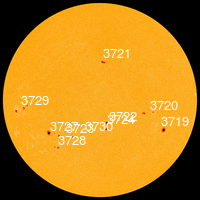 Expand: labels | no labels | Carrington Sunspot number: 146 The Radio Sun Cosmic Rays Solar Cycle 25 is intensifying, and this is reflected in the number of cosmic rays entering Earth's atmosphere. Neutron counts from the University of Oulu's Sodankyla Geophysical Observatory show that cosmic rays reaching Earth are slowly declining--a result of the yin-yang relationship between the solar cycle and cosmic rays.
Credit: NOAA/Ovation Now: Kp= 5.33 storm 24-hr max: Kp= 7.67 storm explanation | more data Btotal: 11.14 nT Bz: 7.88 nT north more data: ACE, DSCOVR Updated: Today at 0857 UT 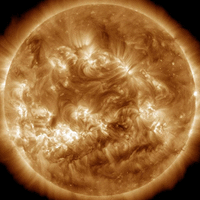 There are no equatorial coronal holes on the Earthside of the sun.Credit: SDO/AIA Polar Stratospheric Clouds On June 28, 2024, the Arctic stratosphere is much too warm for Type II polar stratospheric clouds. | more data. Noctilucent Clouds
Probabilities for significant disturbances in Earth's magnetic field are given for three activity levels: active, minor storm, severe storm
|

